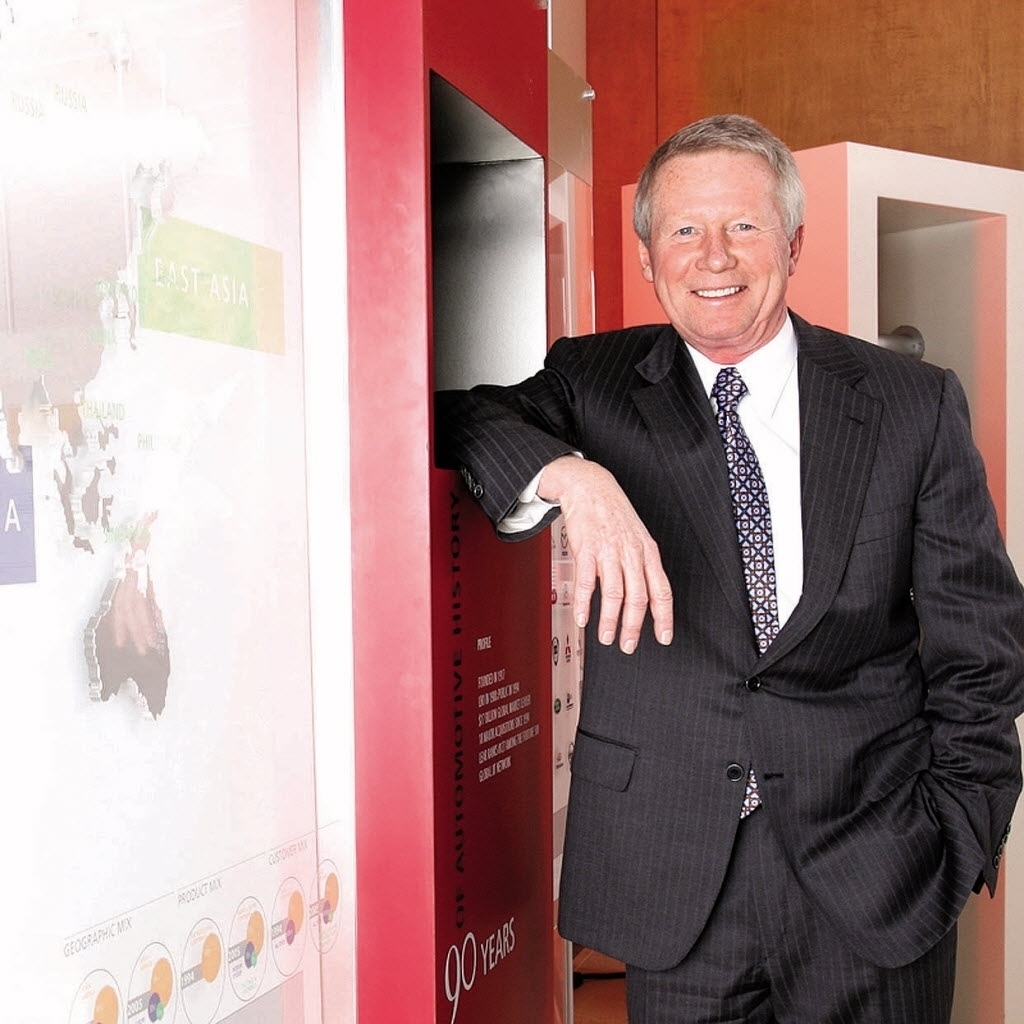February 10, 2016 Updated 2/10/2016
Email Print
John Irwin
Automotive News

Lear Corp. Bob Rossiter took out a second mortgage on his house to help create Lear Corp. and served as CEO from 2000 to 2011.
Former Lear Corp. CEO Bob Rossiter, who worked with the company for 40 years and led it through bankruptcy in 2009, died Feb. 7 after a yearlong battle with cancer.
Rossiter, 69, was “a legend in the industry” who made working for the seating and electronics supplier fun, said Matt Simoncini, who replaced Rossiter as Lear CEO in 2011.
“He had faith in me early, and I wouldn’t be here today were it not for Bob,” Simoncini said.
Simoncini said Rossiter became well-respected inside and outside Lear and was able to sustain himself for so long in large part thanks to his outlook on business.
“More than anything, Bob was big on customer-first and team-first, always the team,” he said, adding that Rossiter’s mindset resonates throughout the company today.
40 years
Rossiter joined the company in 1971 as a production scheduler for what was then known as Lear Siegler Seating Corp.
He spent the following 17 years working his way up the company ladder until he and 29 other executives leveraged a buyout of the company, creating Lear Corp. Rossiter took out a second mortgage on his home in order to do so.
Lear went public in 1994 and grew at a rapid clip throughout the decade, becoming one of the largest suppliers in the world. Rossiter was named CEO in 2000, succeeding Ken Way, who hired him.
In addition to its seating and electronics strongholds, Lear built a $ 2.2 billion interior trim group, with in-house molding for instrument panels, door panels, center consoles and other parts. It sold the majority stake in that interior group in 2005 to investor Wilbur Ross as he was creating International Automotive Components Group.
Rossiter left in 2011 as one of the most-respected — and highest-paid — executives in the industry, leaving Lear and Simoncini with a solid balance sheet and business.
But it wasn’t easy to get there.
Shareholder clash
Rossiter clashed with Lear shareholders in 2007 when he proposed selling the company to legendary Wall Street investor Carl Icahn for $ 2.9 billion. Shareholders blasted the bid, saying it undervalued the company.
“Myself, management, the board, we were all in tune,” Rossiter told Crain’s Detroit Business in 2011. “We saw the market was going to turn down. We thought it was a great deal for shareholders. They owned the company, so I never felt slighted, but when they opposed the deal, I was scared out of my wits.”
Rossiter’s fears were realized as the floor fell out from under the U.S. economy and the auto industry in 2008. Lear’s customers, including the soon-to-be-bankrupt General Motors and Chrysler, made drastic cuts in production as sales of pickups and SUVs collapsed.
Lear entered bankruptcy in July 2009 after the company’s value dropped by as much as 90 percent. It emerged in November of that year after Rossiter and Simoncini made a deal with creditors to reorganize the company — a plan Rossiter said even impressed the judge presiding over the company’s bankruptcy proceedings.
Lear’s turnaround since then has been drastic, as evidenced by the company’s stock value. Lear stock traded for as low as 16 cents per share in 2009. When Rossiter left in 2011, shares were trading for $ 47.55. They traded for as much as $ 126.34 in 2015.
Lear, based in the Detroit suburb of Southfield, Mich., ranks No. 10 on the Automotive News list of the top 100 global suppliers, with worldwide sales to automakers of $ 17.73 billion in 2014. Total sales grew 3 percent to $ 18.2 billion in 2015.
Simoncini said Lear, which last month reported record core operating earnings of $ 359 million in the fourth quarter, owes much of its strength to Rossiter’s business savvy.
Simoncini added: “He made it fun for everyone, no matter what was going on.”
Dustin Walsh of Crain’s Detroit Business contributed to this report.




























